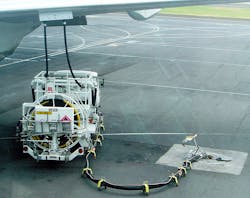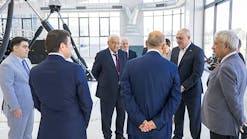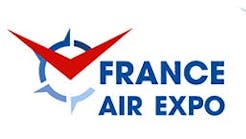Many of us have heard of Crew Resource Management (CRM), the term was developed by John Lauber – a psychologist with NASA – in 1979 following two years of studying cockpit communications between crew members. The aim of CRM is to reduce the potential for human error in decision making. Human error is most often seen in high pressure situations where leadership, communication and decision making all needs to be optimal.
Two examples of absolutely fantastic CRM are the Qantas A380 flight QF32 out of Singapore in 2010 and US Airways flight US1549 out of La Guardia in 2009.
In the former, an engine failure on Qantas A380 flight QF32 placed the flight crew under enormous pressures to make the right decisions and effectively communicate amongst themselves with ground resources and with the passengers while still managing a largely stricken aircraft with numerous system failures. The pressures must have been enormous, yet they managed to coax the aircraft back to Singapore without loss of life.
In the latter, the US Airways A320 suffered total engine failure following a bird strike while climbing out of La Guardia and needed an airfield to make an emergency landing. As the crew worked frantically to find an airfield at which they could put the aircraft down, they effectively ran out of options and realised that they had to perform a water landing on the Hudson River if they were to avoid fatalities. Again, a fantastic effort under absolutely adverse conditions.
CRM still respects the command hierarchy, but encourages other crew members to speak up and question the captain if they observe the captain making a mistake, a potentially fallible decision or find themselves in a situation in which they need to understand more about the reason for a particular decision rather than just blindly agreeing to the direction of a more senior figure.
Why do I talk about CRM in a magazine destined largely for ground personnel? Because we can learn from CRM and apply the same techniques in ground support operations equally effectively and with similar results to reduce incidents and better inform decisions.
United Airlines now trains flight attendants in CRM because attendants interact with pilots and have to make decisions in the cabin of the aircraft. Their communication, decision making and teamwork all benefit from CRM principles. Surely ground support teams can also benefit from similar training.
For ground staff, this is known as Ramp Resource Management (RRM), and it focuses on the same elements as CRM: effective communication, the willingness to questions decisions, the welcoming of such questioning and additional inputs to critical decisions to provide increased safety on the ramp.
Ground operations are every bit as critical as inflight operations in getting people and freight from one place to another. We are often under time pressures to get aircraft turned around in less time than is scheduled, to get them fuelled, catered, cleaned, unloaded and reloaded, and sometimes with limited resources.
So what would RRM look like at an airport? RRM would optimize the safety of personnel and equipment to turn an aircraft around as efficiently as we can.
This requires an information flow. It requires resources – personnel and equipment. It requires coordinated activities and an understanding of what’s possible and the resulting decisions made and, finally, support of those decisions.
Take the following scenario as an example, Refueler A would do anything for anyone on the ramp because his priority is to see the aircraft turned around and ready to depart as fast as it can be:
- Refueler B advises that he has a clash of flights due to flights running late. He has two on the ground together and cannot fuel them both.
- Refueller A says he can pick up one of the aircraft for his mate and all is well.
- No-one thinks any more about it until 10 minutes before one of the aircraft is due to depart, the airline is calling and asking where the fuel is. The supervisor calls Refueller A on the radio and he advises he is on his way but is running late because his last refuel took longer than expected.
There is now no time to recover, and the flight is going to be late.
The discussion, after all has settled down, is around why he didn’t call when he first realized he would not make the second aircraft in time. The ground support staff could have either told the airline or shuffled refuelers again, but this is not really the discussion that should have been happening at all.There is now no time to recover and the flight is going to be late.
Under RRM, the discussion should have started with knowing where all the resources were and how they could be juggled to manage all flights.
Additionally, the ground crew should have started to talk to the airlines about allocation of resources and departure priorities to avoid passengers sitting on aircraft unnecessarily and to avoid people having to rush from one aircraft to another, increasing the potential for collision with aircraft or other ground equipment, speeding, checking the paperwork, checking that the fuel asked for was actually delivered and a myriad of other potential incidents. There were a number of fallible decisions made here, and a high risk of incident as a consequence. All could have been resolved with the use of RRM.
The Supervisor should have challenged the decision of Refueler A to pick up another flight and how he was going to arrange himself. What were the fuel loads? Could he physically uplift the fuel load in time? What other options were there for refuelers and trucks? Or, if there was no option, then phone the airline and tell them the issue and the potential delay so that everyone else could react accordingly.
The aim of RRM training is to improve the preventative barriers by recognizing the effects that human factors have in ground operations.
It also ensures that there is a cohesive and efficient team rather than every person operating alone. It empowers employees to speak up when they feel something may be wrong without risk of criticism or retribution for doing so.
The ultimate aim of RRM is to reduce safety incidents and create a safer work environment. Conveniently, it makes operations more efficient which leads to lower resources and cost savings so, with a little bit of RRM training, companies can make significant savings in operational spending, have a more engaged workforce and a safety record second to none.
A Shell Oil facility had a phrase that helped encourage people to speak up when they felt something was not quite right and it is one I frequently use in human factors training: “have the courage to intervene and have the character to accept interventions.”






